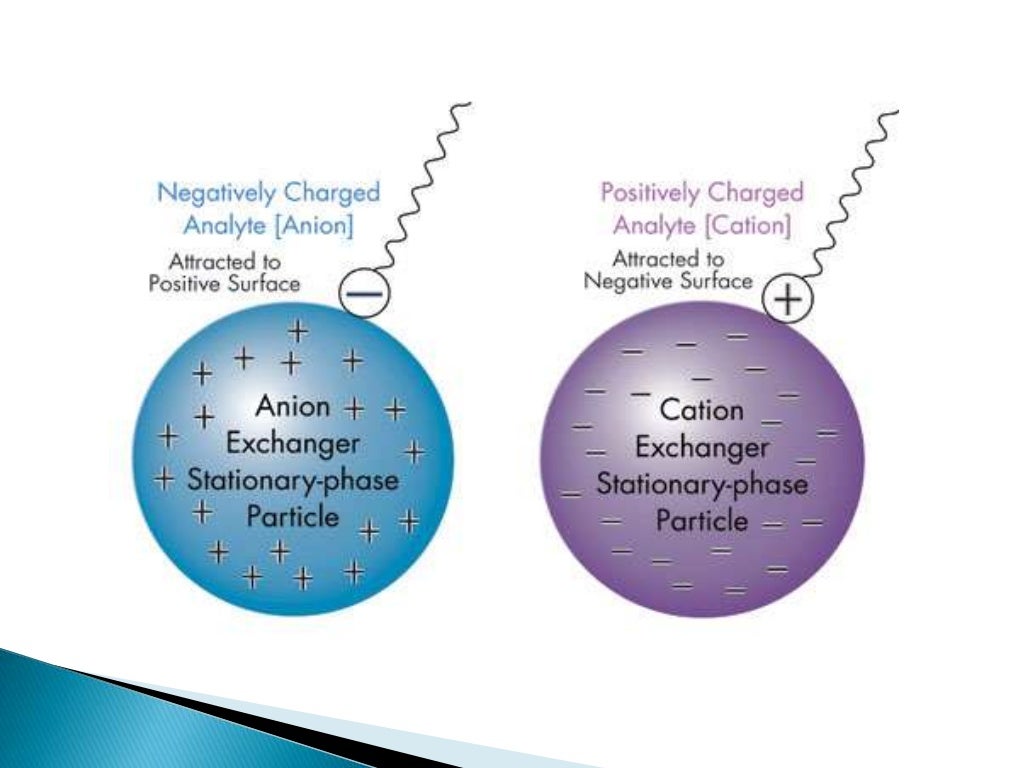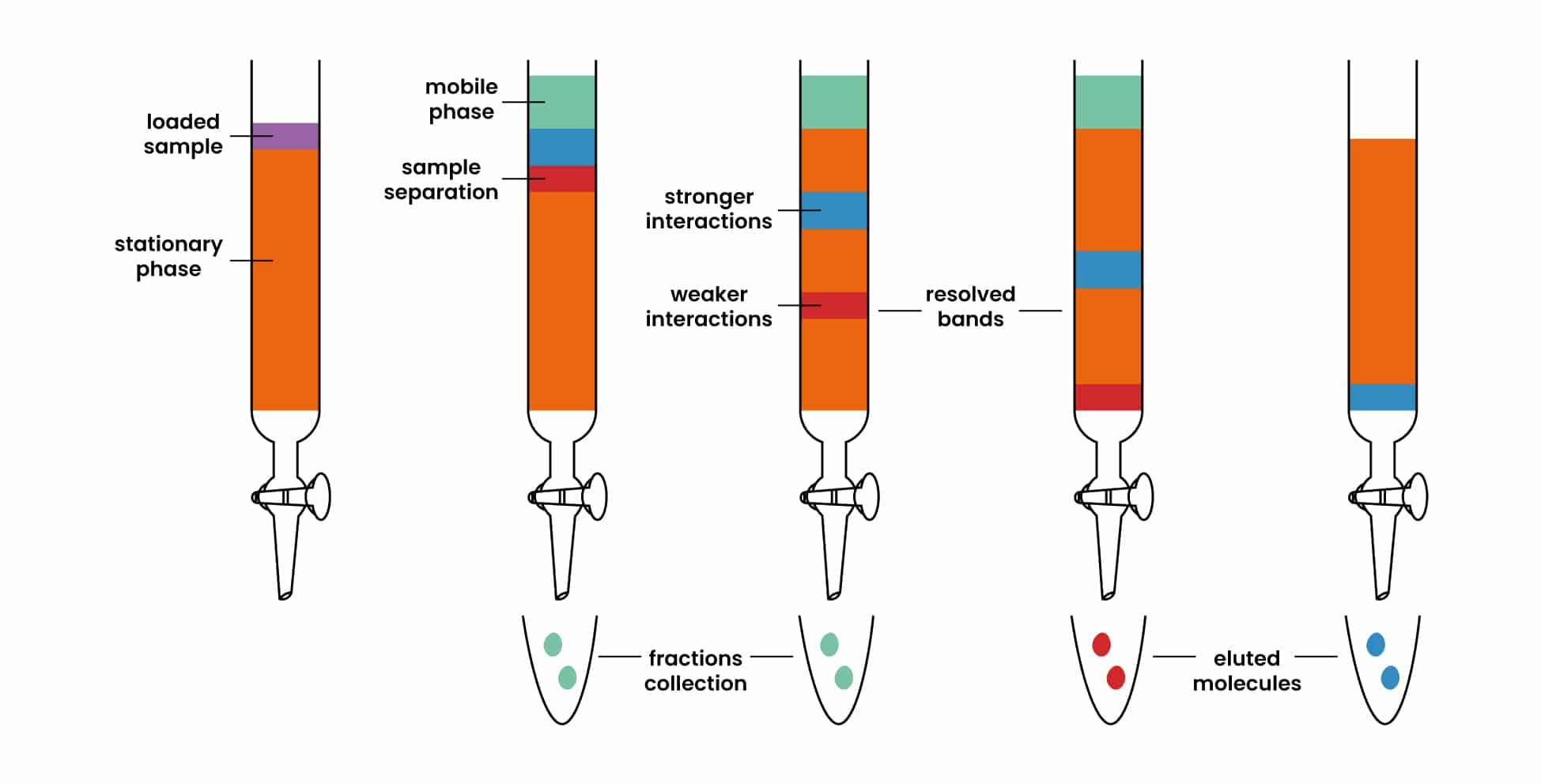Ion Exchange Chromatography Presentation
| Introduction to Ion Exchange Chromatography | ||
|---|---|---|
| Ion exchange chromatography is a powerful separation technique used in biochemistry and analytical chemistry. It involves the separation of charged molecules based on their affinity for oppositely charged stationary phases. This technique is widely used in the purification and analysis of proteins, nucleic acids, and other biomolecules. | ||
| 1 | ||
| Principle of Ion Exchange Chromatography | ||
|---|---|---|
| Ion exchange chromatography relies on the reversible adsorption of charged analytes to a solid stationary phase. The stationary phase is typically a resin composed of small porous beads with charged functional groups. The analytes are separated based on their affinity for the charged groups, with stronger interactions resulting in longer retention times. | ||
| 2 | ||
| Types of Ion Exchange Chromatography | ||
|---|---|---|
| Cation exchange chromatography: Separates positively charged analytes by using a negatively charged stationary phase. Anion exchange chromatography: Separates negatively charged analytes by using a positively charged stationary phase. Mixed-mode ion exchange chromatography: Combines both cation and anion exchange principles to provide additional selectivity. | ||
| 3 | ||
| Sample Loading and Elution | ||
|---|---|---|
| Sample loading: The analyte mixture is applied to the ion exchange column under appropriate buffer conditions. Adsorption: Charged analytes bind to the oppositely charged stationary phase based on their respective affinities. Elution: Analytes are selectively eluted by changing the buffer conditions, such as pH or ionic strength, to disrupt the electrostatic interactions. | ||
| 4 | ||
| Factors Affecting the Separation | ||
|---|---|---|
| pH: pH affects the charge of the analytes and the functional groups on the stationary phase, influencing their interactions. Ionic strength: Increasing the ionic strength reduces the strength of electrostatic interactions, leading to faster elution. Temperature: Temperature influences the kinetics of the ion exchange process and can be optimized for faster separations. | ||
| 5 | ||
| Advantages of Ion Exchange Chromatography | ||
|---|---|---|
| High selectivity: Ion exchange chromatography allows for precise separations based on charge differences. Versatility: It can be used for a wide range of analytes, from small ions to large biomolecules. Scalability: The technique is scalable for both analytical and preparative purposes, making it suitable for various applications. | ||
| 6 | ||
| Applications of Ion Exchange Chromatography | ||
|---|---|---|
| Protein purification: Ion exchange chromatography is commonly used in protein purification workflows to separate different variants or remove contaminants. Nucleic acid analysis: This technique can be employed to separate and purify nucleic acids based on their charge and size. Drug discovery: Ion exchange chromatography is utilized in the analysis and purification of drug candidates during the discovery process. | ||
| 7 | ||
| Challenges and Limitations | ||
|---|---|---|
| Non-specific binding: Some analytes may interact with the stationary phase non-specifically, leading to loss of resolution. Limited capacity: The capacity of the stationary phase to retain analytes is finite and can be limited for high-abundance samples. Sample compatibility: The buffer and pH conditions required for ion exchange chromatography may not be compatible with all samples. | ||
| 8 | ||
| Recent Advances in Ion Exchange Chromatography | ||
|---|---|---|
| Monolithic ion exchange columns: These columns offer improved mass transfer and faster separations compared to traditional bead-based columns. High-throughput automation: Advances in automation have enabled the integration of ion exchange chromatography into high-throughput workflows. Multi-dimensional ion exchange chromatography: Coupling ion exchange chromatography with other separation techniques allows for enhanced resolution and selectivity. | ||
| 9 | ||
| Conclusion | ||
|---|---|---|
| Ion exchange chromatography is a versatile and powerful separation technique widely used in biochemistry and analytical chemistry. It enables the separation of charged analytes based on their affinity for oppositely charged stationary phases. With continued advancements, ion exchange chromatography continues to play a crucial role in various applications, from protein purification to drug discovery. | ||
| 10 | ||






